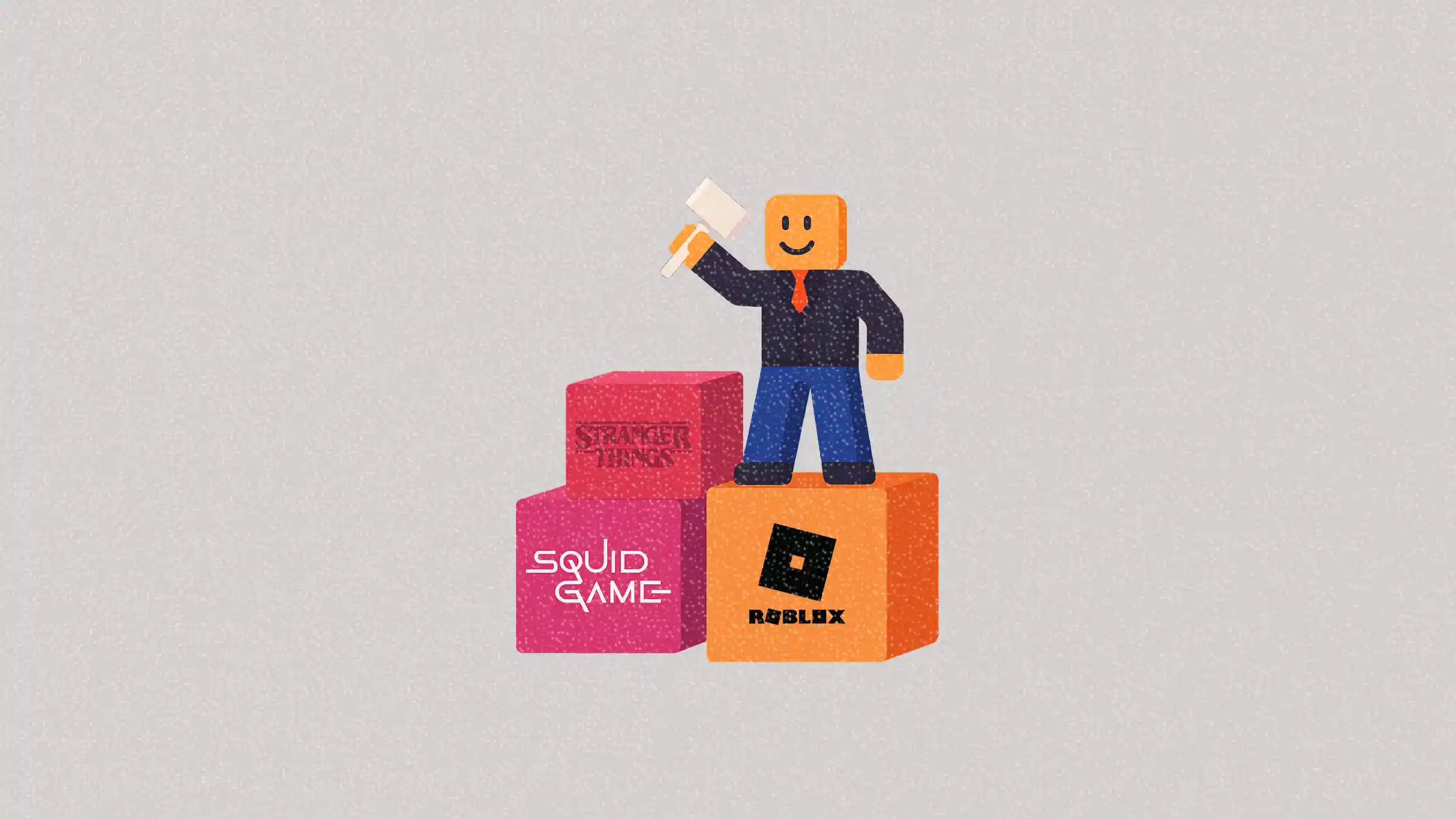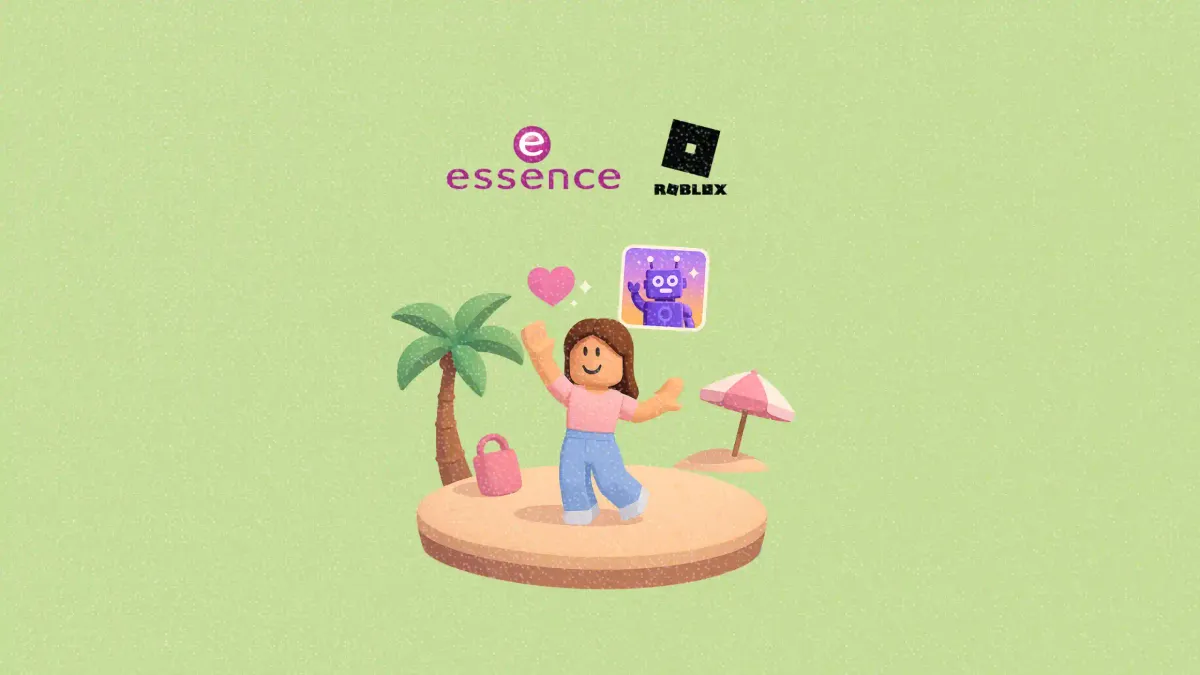Roblox just made it legal to build with big-name IPs
Roblox just made it legal and easy for creators and brands to build games around blockbuster IPs

In a move set to shake up branded gaming and fan engagement, Roblox has launched a self-serve licensing platform that gives creators legal access to blockbuster intellectual property (IP).
This isn’t just a win for fan-developers, it’s a strategic greenlight for marketers looking to build immersive, brand-safe experiences in the world of user-generated content (UGC).
This article explores what the new tools mean for the future of brand storytelling, how platforms like Netflix and Lionsgate are using Roblox to extend IP lifespan, and why this could mark a turning point in how marketers approach fandom in gaming ecosystems.
Short on time?
Here’s a table of contents for quick access:
- What happened: Roblox’s licensing tool goes live
- Context: A brand-safe fix for the UGC grey zone
- What marketers should know: new routes to IP engagement
- Strategic implications for marketers

What happened: Roblox's licensing tool goes live
This week, Roblox unveiled two tools: the License Manager and Licenses Catalog. Together, they enable creators to legally build games and interactive experiences using popular IPs from Netflix, Lionsgate, Sega, Kodansha, and others.
Available IPs at launch include Squid Game, Stranger Things, Twilight, Saw, Divergent, Now You See Me, and Sega’s Like a Dragon franchise.
These tools automate what used to be a tedious and bespoke licensing process. Hence, lowering the barrier for creators and eliminating legal grey areas for brands. Roblox is positioning this as a scalable way to connect rights holders with its 100 million daily active users, many of whom belong to Gen Z and Gen Alpha.
“Roblox offers a unique and dynamic platform for our fans to connect with beloved franchises in interactive and personal ways,” said Jenefer Brown, Executive Vice President and Head of Global Products and Experiences at Lionsgate.

Context: A brand-safe fix for the UGC grey zone
Until now, brands operating on Roblox faced a dilemma: user-generated fan content could drive massive engagement but it also flirted with copyright infringement. So the new licensing infrastructure effectively legalizes and standardizes fan-built experiences, converting them from legal risk into brand assets.
This aligns with Roblox’s long-term goal of capturing 10% of global gaming content revenue through its creator economy. In 2023 alone, Roblox developers earned nearly US$1 billion, a number expected to grow with the introduction of licensed IP monetization.
For brands, the key shift is from "controlling" fan engagement to "co-creating" it in sanctioned environments. That’s a playbook streaming services and media studios increasingly need as they battle IP fatigue and content churn.
What marketers should know: new routes to IP engagement
This isn’t Roblox’s first branded rodeo. Nike (Nikeland), Spotify (Spotify Island), and Vans (Vans World) have all successfully used immersive fan spaces to refresh their brand presence. But the licensing update adds a new layer: legal scalability.
Here’s what marketers should be tracking:
1. IP now scales like UGC
Rights holders no longer need to build every experience in-house. Instead, they can let creators extend the franchise world while retaining control through licensed assets and guidelines.
2. Franchise marketing just became interactive
Roblox now supports a two-way relationship between fan and IP. This enables storyworld expansion, live events, limited-edition virtual merch, and new narrative arcs at near-zero production cost to the brand.
3. Sandbox strategy is now a brand strategy
From Netflix to Sega, brands are waking up to the fact that gaming isn’t just a marketing channel but an extension of content IP. With Roblox’s tools, you can seed official lore into the creator community, generating engagement that feels organic, not forced.
Strategic implications for marketers
As UGC becomes more sophisticated and IP holders loosen the reins, Roblox is becoming a new frontier for brand activation. Here’s what to consider:
- Start mapping your IP potential.
Even if your brand doesn’t own film-level IP, think about what characters, worlds, or cultural assets could be licensed for creator use.
- Plan for platform-native storytelling.
Roblox experiences aren’t trailers but they are games. If you're entering this space, you need creative partners who understand gameplay loops and narrative design.
- Don’t underestimate Gen Alpha.
Roblox’s user base includes millions of under-18 users. That’s your future customer and their expectations for brand engagement are being shaped right now.





